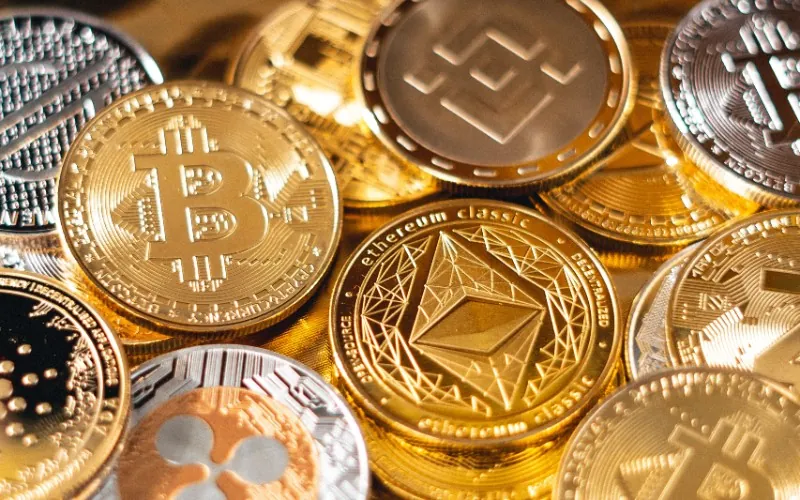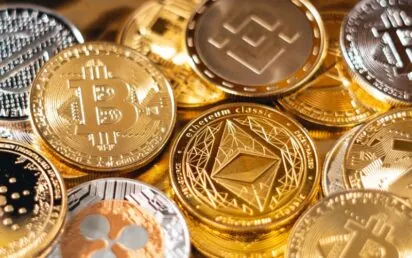Introduction
Near field communication (NFC) is, in simple terms, a way for two devices to communicate with each other. It’s most commonly used with mobile phones and contactless payment cards, but can also be used with cars and at points of entry such as gates and doors. The technology was developed by Nokia in the 1990s but did not really take off commercially until a decade later when Apple introduced its Passbook app — which allowed users to store tickets and boarding passes on their phones using NFC technology — in 2012. Since then it has become a popular way for companies to save money on printing out physical items like tickets and boarding passes. In this article we will explore how this technology can be useful in cryptocurrency settings.
Near field communication (NFC) is a technology that enables two devices to communicate with each other by touching or bringing them within a few centimetres of each other.
Near field communication (NFC) is a short-range communication technology that enables two devices to communicate with each other by touching or bringing them within a few centimetres of each other. NFC is used for mobile payments, access control and other purposes.
NFC has a range of about 10 cm (4 inches). It does not require line-of-sight, so it can function in crowded places where radio waves from Wi-Fi and Bluetooth cannot penetrate obstacles such as walls or people.
NFC may be used to exchange data between two devices, make payments, or provide identification information.
NFC-enabled smartphones and tablets can be used for mobile payments at the point of sale (POS), exchanging data between two devices and much more.
NFC is based on radio-frequency identification (RFID), which utilizes electromagnetic fields to identify and track tags attached to objects. When your mobile device comes into close proximity of an NFC tag—which is embedded in a poster or sign, for example—the two devices exchange information via radio waves. NFC is used in many different ways, including:
- Using your smartphone as an electronic wallet to pay for goods and services at participating stores.
- Connecting two NFC-enabled devices so they can exchange information wirelessly. For example, you could use NFC technology to share contact details or photos between two smartphones.
The technology is most commonly used with mobile phones and contactless payment cards, but can also be used with cars and at points of entry such as gates and doors.
NFC technology is a short-range wireless communication standard that allows two devices to exchange data by touching them together or bringing them into close proximity. It’s most commonly used with mobile phones and contactless payment cards, but can also be used with cars and at points of entry such as gates and doors.
NFC is used in many different applications:
- Contactless payments – The most common use of NFC technology is to make payments using a payment card that supports the technology like Visa PayWave or MasterCard PayPass. You simply tap your card on the reader when checking out at a store, no need for cash or credit cards anymore! Mobile payments are also becoming more popular thanks to services like Android Pay and Apple Pay which allow people who own smartphones with built-in NFC chips (which have become standard features since 2014) make purchases simply by tapping their device against an appropriate terminal placed within range of their phone’s antennae (usually about 10cm).
- Unlocking doors – Another example would be unlocking doors remotely using an app installed on your smartphone; this works similarly as described above but requires some additional steps such as entering a passcode first before activating any remote functions
NFC was developed by Nokia in the 1990s, but it did not really take off commercially until a decade later.
NFC was developed by Nokia in the 1990s, but it did not really take off commercially until a decade later. Today you can find NFC technology in everything from credit cards to passports to mobile devices. The technology has been used to make paying for goods and services more secure, as well as allowing users to interact with their devices without having to touch them or even look at them.
As you can probably imagine, the technology is quite popular in the world of mobile payments and mobile identity. You may not have heard of NFC, but you probably know what it is and how it works. If not, then read on to get a better understanding of this increasingly important technology.
NFC technology is incredibly useful in daily life, as well as in cryptocurrency settings
NFC technology is incredibly useful in daily life, as well as in cryptocurrency settings. For example, NFC can be used at points of entry such as gates and doors to allow the user access to a facility or building. NFC Authentication offer a highly secure digital NFC authentication system in which each item is engraved with its own unique ID number. It can also be used for payment purposes on mobile phones by providing an easy way for people to make payments without having to swipe their cards or enter their PIN number every time they want something from a vending machine.
In addition to these common uses of NFC technology today, cryptocurrency enthusiasts have been using this same type of technology since 2011 when Bitcoin was first introduced into the world market as an alternative form of currency that could be traded online without any middlemen involved (such as banks). Today there are several different cryptocurrencies available including Ethereum Classic (ETC), Litecoin (LTC), EOS and many others which all rely heavily upon digital wallets where users can store their funds safely away from hackers who might try stealing them from exchanges like Binance – which just happened recently!
Conclusion
NFC technology is a powerful tool that can be used in many different ways. In addition to making payments with your phone or card, it can also help you access buildings more easily by providing access codes on their doors as well as helping you identify yourself at work or school when entering through security checkpoints. The ability for cryptocurrencies like Bitcoin and Ethereum Classic (ETC) to interact with this type of technology opens up new possibilities for how we think about money today and what it might look like in the future.

